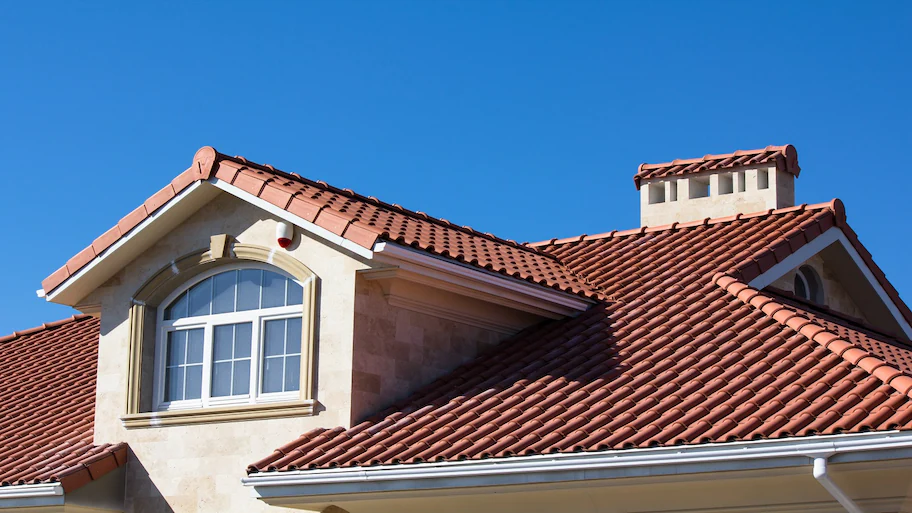When it’s time to replace your roof, understanding the costs involved can help you budget effectively and make informed decisions. A new roof is a significant investment, and several factors influence the total cost. These include the size and complexity of your roof, the type of materials you choose, labor costs, and your location. Knowing these factors can help you get a clearer picture of what to expect and ensure that you’re prepared for the financial commitment. This guide will break down each of these factors to give you a comprehensive understanding of roofing costs and help you make the best choices for your home.
Factors Affecting the Cost of a New Roof
Roof Size and Complexity
The size of your roof is one of the most significant factors affecting the cost of a new roof. Roofing contractors usually calculate costs based on the square footage of your roof. Larger roofs will naturally cost more due to the increased amount of materials and labor required. Complexity also plays a crucial role. Roofs with multiple slopes, valleys, or unique architectural features can be more challenging to install, which increases labor costs. Complex roofs may also require additional materials and specialized techniques, leading to a higher overall price. To get an accurate estimate, contractors will need detailed measurements and an understanding of your roof’s layout.
Roofing Materials
Choosing the right roofing material is another key factor that impacts cost. Asphalt shingles are one of the most common and affordable options, typically costing less per square foot compared to other materials. Metal roofing is durable and energy-efficient but comes at a higher price point. Tile roofing, whether ceramic or concrete, is known for its longevity and aesthetic appeal, but it can be one of the more expensive options. The cost of materials can vary widely based on quality, brand, and availability. It’s essential to consider not only the initial cost but also the long-term benefits and maintenance requirements of each material type.
Labor Costs
Labor costs for installing a new roof can vary significantly depending on your location and the complexity of the job. In general, labor costs are higher in urban areas compared to rural locations. Roofing contractors typically charge based on the size of the roof, the difficulty of the installation, and the local cost of living. It’s important to get multiple quotes from different contractors to ensure you’re getting a fair price. When comparing quotes, be sure to check what’s included in the cost, such as removal of old roofing, installation of new materials, and any necessary repairs. Hiring experienced and reputable contractors may cost more upfront but can save you money in the long run by avoiding issues and ensuring a quality installation.
Location and Accessibility
Your location can significantly impact the cost of a how much is a new roof. Roofing prices vary by region due to differences in local labor rates, material costs, and building codes. For example, roofs in areas prone to severe weather may require more robust materials, which can increase costs. Accessibility also plays a role; if your roof is difficult to reach or has limited access, it may require additional equipment or time to complete the job, which can drive up the price. Additionally, if your home is located in a remote or hard-to-reach area, transportation costs for materials and workers may also be higher. Understanding these regional factors can help you better anticipate your roofing costs.
Average Costs of Different Roofing Materials
Asphalt Shingles
Asphalt shingles are one of the most popular roofing materials due to their affordability and ease of installation. On average, asphalt shingles cost between $90 and $100 per square (a roofing term referring to a 10×10-foot area) for materials. They offer a good balance of cost, durability, and aesthetics. Asphalt shingles come in various styles and colors, allowing homeowners to choose a look that complements their home. They generally last between 15 to 30 years, depending on the quality and maintenance. Asphalt shingles are also relatively easy to repair, making them a practical choice for many homeowners looking to manage costs while still ensuring reliable protection.
Metal Roofing
Metal roofing is known for its durability and energy efficiency, but it comes at a higher price. The cost of metal roofing typically ranges from $100 to $300 per square, depending on the type of metal and style. Metal roofs can be made from aluminum, steel, copper, or zinc, each offering different benefits and price points. They are highly resistant to extreme weather conditions, such as heavy rain, snow, and high winds. Additionally, metal roofing can reflect solar heat, which may help reduce cooling costs in hot climates. While the initial investment is higher compared to asphalt shingles, metal roofs often have a longer lifespan, sometimes exceeding 50 years, which can provide long-term savings.
Tile Roofing
Tile roofing, including both clay and concrete options, is another premium choice that offers a distinct look and excellent durability. On average, tile roofing costs between $200 and $400 per square. The higher price reflects the material’s longevity and aesthetic appeal. Tile roofs are known for their ability to withstand harsh weather conditions and their resistance to fire and insects. They also have a unique architectural style that can enhance the curb appeal of a home. However, tile roofs are heavier and may require additional structural support, which can add to the overall cost of installation. Despite the higher initial expense, tile roofing’s durability and low maintenance requirements can offer good value over time.
Additional Costs to Consider
Removal of Old Roofing
Before installing a new roof, the old roofing material often needs to be removed, which can add to the overall cost. Removing old shingles or other materials typically costs between $75 and $150 per square. This process involves stripping away the old roofing, disposing of the debris, and preparing the roof deck for new materials. While this step is necessary to ensure a proper installation, it can increase the total cost of your roofing project. In some cases, it might be possible to install new roofing over the existing layers, but this depends on the condition of the old roof and local building codes. Make sure to discuss removal options with your contractor to understand the full scope of the project.
Repairs and Upgrades
During a roof replacement, additional repairs or upgrades may be needed, which can affect the total cost. If the roof deck or underlying structure is damaged, it will need to be repaired or replaced before the new roof can be installed. This could include fixing rotting wood, reinforcing structural elements, or addressing issues with insulation. These repairs can add several hundred to a few thousand dollars to the overall cost, depending on the extent of the damage. Additionally, you might want to consider upgrades such as improved ventilation or energy-efficient underlayment, which can enhance the performance of your new roof but will increase the total cost.
Permits and Inspections
Obtaining permits and scheduling inspections are important steps in the roofing process that can affect the cost. Most areas require a permit for roofing projects, and the cost of these permits varies by location. Additionally, local building codes may dictate specific requirements for your new roof, which can impact both materials and installation methods. Inspections are often required to ensure that the work meets local standards and regulations. While these additional costs might seem minor compared to the overall expense of a new roof, they are essential for ensuring a safe and compliant installation. Be sure to check with your contractor about permit requirements and inspection fees in your area.
How to Get an Accurate Roofing Estimate
Getting Multiple Quotes
To ensure you get a fair price for your new roof, it’s a good idea to get multiple quotes from different roofing contractors. Each contractor may provide a slightly different estimate based on their pricing structure, experience, and the scope of work. When comparing quotes, be sure to review what is included in each estimate, such as the cost of materials, labor, removal of old roofing, and any additional charges. Getting multiple estimates allows you to compare prices and services, helping you make a more informed decision. Additionally, it gives you the opportunity to negotiate and potentially find a better deal or uncover any hidden costs.
Questions to Ask Roofing Contractors
When obtaining estimates, asking the right questions can help ensure that you get an accurate and comprehensive quote. Key questions to ask include: What is the total cost, including materials and labor? Are there any additional fees for removal of old roofing or permits? What type of warranty is included with the new roof? How long will the installation take, and will the contractor handle obtaining permits and scheduling inspections? Understanding these details can help you avoid unexpected costs and ensure that the contractor is clear about the scope of work. It’s also helpful to ask about the contractor’s experience and references to ensure you’re hiring a reliable professional.
Reviewing Contractor Credentials
Before finalizing your choice of roofing contractor, it’s important to review their credentials to ensure they are qualified and trustworthy. Check if the contractor is licensed and insured, as this protects you in case of accidents or damage during the project. Additionally, look for contractors with good reputations and positive reviews from previous clients. You can also ask for references and examples of past work to gauge their experience and quality of craftsmanship. A reputable contractor will be transparent about their qualifications and willing to answer any questions you have. Taking the time to review credentials can help ensure that you get a high-quality roof installation and avoid potential issues down the road.
Ways to Save on Roofing Costs
DIY vs. Professional Installation
Deciding between DIY roofing installation and hiring a professional can impact your overall costs. While DIY might seem like a cost-saving option, it’s important to consider the potential risks and challenges. Roofing can be complex and dangerous, requiring specialized tools and techniques. Mistakes can lead to costly repairs or even safety hazards. On the other hand, professional contractors bring experience and expertise, ensuring a high-quality installation and potentially saving you money in the long run by avoiding issues and ensuring proper installation. Consider your skills, safety, and the complexity of the job when deciding between DIY and professional installation.
Financing Options
If the cost of a new roof is more than you can afford upfront, there are several financing options available to help manage the expense. Many roofing companies offer financing plans with flexible payment terms. You might also consider home improvement loans or lines of credit from financial institutions. Some credit cards offer promotional financing options with low or zero interest for a limited time. Additionally, certain government programs or grants may be available for energy-efficient upgrades or low-income homeowners. Be sure to explore all your financing options and choose the one that best fits your budget and financial situation.
Seasonal Considerations
Timing your roof replacement can impact both the cost and the overall project. Roofing companies often have peak seasons, such as spring and summer, when demand is high and prices may be higher. Scheduling your project during the off-season, such as fall or winter, can sometimes result in lower costs and better availability. Additionally, weather conditions play a role in roofing projects; mild and dry weather is ideal for installation, while extreme temperatures or heavy rain can cause delays and increase costs. Planning your roof replacement during a time when weather conditions are favorable and contractors are less busy can help you save money and ensure a smoother project.
Conclusion
Understanding the costs associated with a new roof involves considering various factors, from the size and complexity of your roof to the materials you choose and your location. By exploring the average costs of different materials, additional expenses, and ways to save, you can better prepare for your roofing project. Getting multiple quotes, asking the right questions, and reviewing contractor credentials are essential steps in ensuring you receive a fair price and a quality installation. Whether you opt for professional installation or explore financing options, careful planning and informed decisions can help you manage the costs and achieve a successful roofing project that meets your needs and budget.




